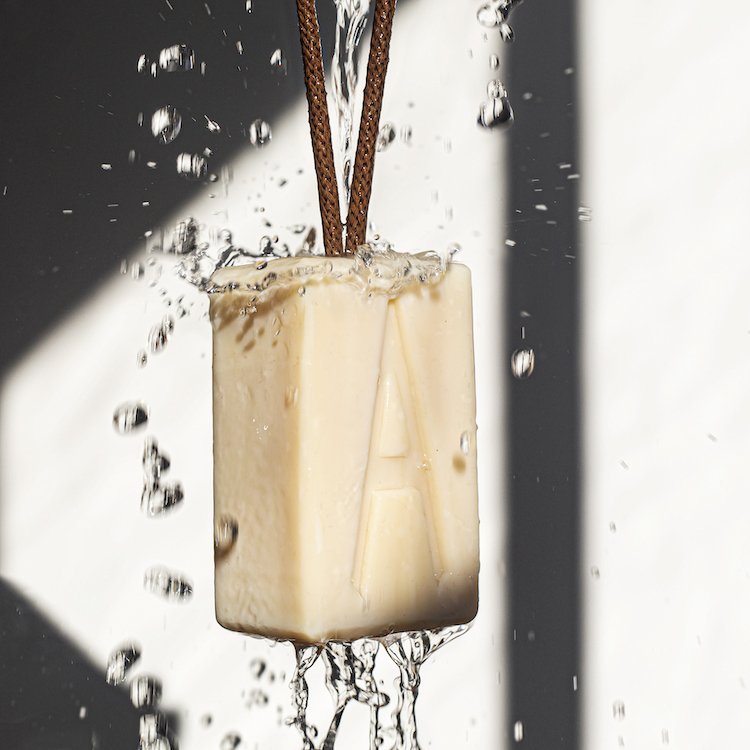What’s in your lather?
The ingredient labels on some personal care products can be a bit like reading Shakespeare’s Macbeth!
“Eye of newt, and toe of frog,
Wool of bat, and tongue of dog,
Adder’s fork, and blind-worm’s sting,
Lizard’s leg, and howlet’s wing,…”
The following is the ingredient list from a popular, unscented commercial beauty bar marketed to those with sensitive skin:
Sodium Lauroyl Isethionate, Stearic Acid, Lauric Acid, Sodium Oleate, Water (Eau), Sodium Isethionate, Sodium Stearate, Cocamidopropyl Betaine, Fragrance (Parfum), Sodium Laurate, Tetrasodium Etidronate, Tetrasodium EDTA, Sodium Chloride, Kaolin or (ou) Titanium Dioxide.
And as a comparison, below are the ingredients for Aermeda unscented Double Milk Vegan Soap:
Saponified organic oils/butters of Olive, Coconut; Shea; Cocoa; Almond and Castor; Rice & Coconut Milk; Kaolin
As you can see, we take a ‘less-is-more’ approach when it comes to healthy skin.
What you won’t find in our products are……..
Parabens - include Methylparaben, butylparaben, ethylparaben and propylparaben.
What are parabens? The paraben family are used as preservatives and are effective in restricting microbial growth in products - often combinations of several parabens are used. Particularly popular in companies with large distributions, as they are a cheap ingredient and extend the shelf life of their products.
While parabens can be sourced from para-hydroxbenzoic (PHBA) which occurs naturally in some plants, the vast majority of parabens found in personal care products are not natural – they are synthetic.
Phthalates – include acronyms that refer to their chemical structure.
DEP: Diethyl phthalate
DMP: Dimethyl phthalate
DBP: Dibutyl phthalate
DINP: Diisononyl phthalate
DNOP: Di-n-octyl phthalate
BBP: Benzyl butyl phthalate
What are phthalates? Phthalates are a group of synthetic man-made, oily chemicals that are transparent and odourless. They are often used in personal care products to bind ingredients and assist with fragrance longevity. Although this piece is about soaps, phthalates are found in an astonishing range of products from toys to pesticides to food packaging to clothing and they are incredibly hard to avoid – for an example they are used in making plastics softer and more flexible.
In personal care products the easiest way to avoid phthalates is to ensure anything scented is fragranced with essential oils and not synthetic fragrances – like the entire Aermeda range which includes only essential oils!
Sulfates – include sodium lauryl sulfate (SLS)
What are sulfates? Sulfates are added as a foaming agent to personal care products. Some sulfates are associated with dermal irritation and allergic contact dermatitis.
Petrochemicals – petroleum jelly, mineral oils
What are petrochemicals? Readily available by-products of the petroleum-based industry, petrochemicals are used to protect the skin from water loss.
Skin is an exchange organ and as petrochemicals frequently contain comedogenic (pore-blocking) properties resulting in that exchange being blocked.
Synthetic colours & Synthetic fragrance – we avoid these and choose to work with natural colours and scents. This will be covered in seperate journal entry.
Aermeda is not trying to be ‘on trend’ nor embrace ‘buzz’ words by avoiding certain ingredients. We do so because we are familiar with the evolving research around the effects of some of these ingredients on us and the planet. This journal entry is not intended to ‘scaremonger’ – it is a brief summary, although personally I find the inclusion of some ingredients concerning – it is to inform and hopefully whet the readers appetite to research more into what is in your personal care products.
Basically the message is know what’s in your lather!









